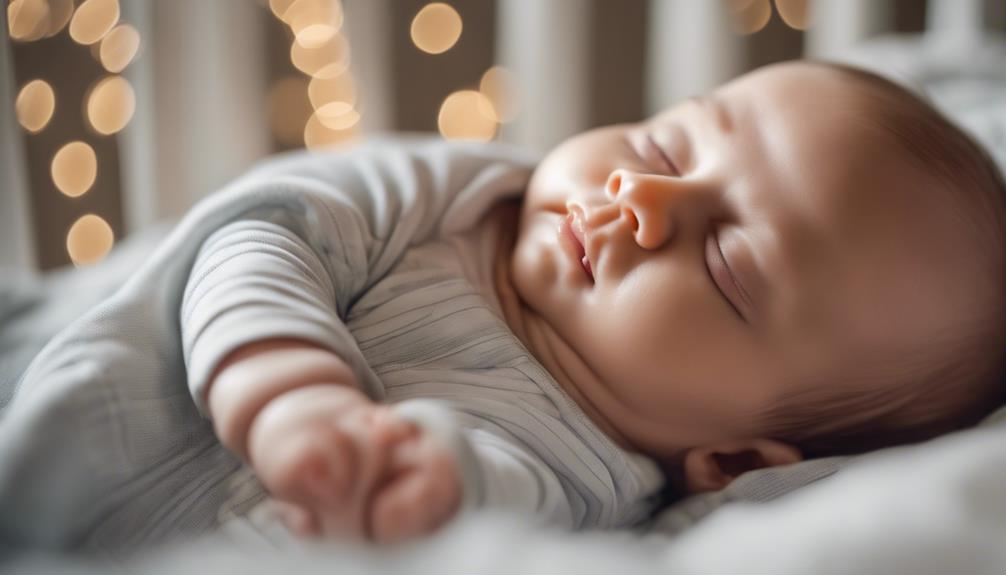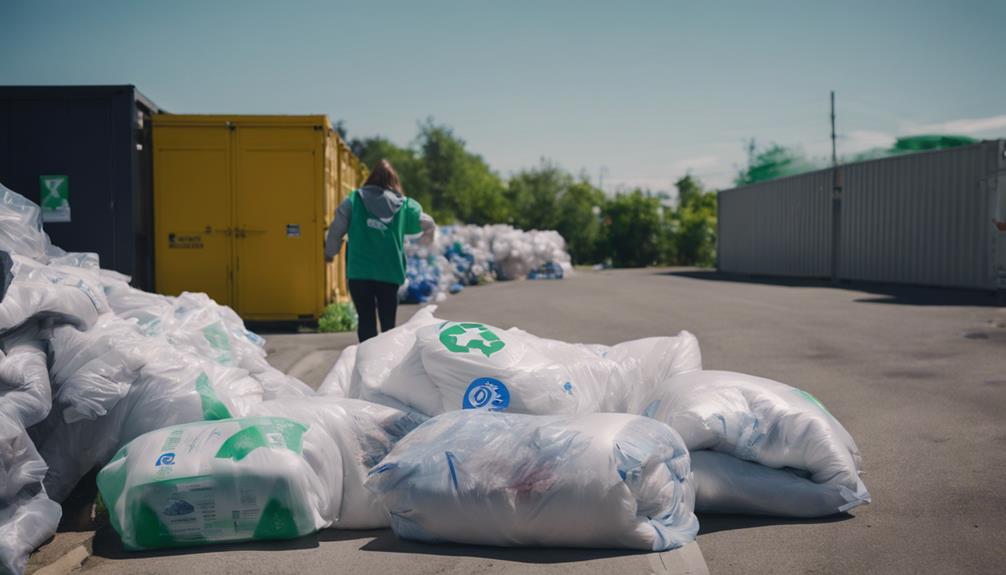When it concerns the safety of blankets for babies, it is recommended to introduce them between 7-9 months to promote healthy sleep routines. Be mindful of potential dangers and factors that may impact blanket safety. It is important to prioritize selecting blankets that are suitable for your baby’s age and are safe, while closely monitoring their use. Strike a balance between comfort and potential risks by choosing the appropriate blanket and being vigilant about safety issues. Watch for signs of readiness around 7-9 months and establish a secure sleep environment. By adhering to these recommendations, you can ensure a secure and comfortable sleep environment for your little one.
Key Takeaways
- Introduce comforters around 7-10 months to support healthy sleep habits.
- Avoid unsupervised soft toys in the cot until 12 months.
- Select age-appropriate and safe sleep comforters.
- Monitor comforters for wear and choking hazards regularly.
- Balance comfort with safety by evaluating suffocation and strangulation risks.
Safety Guidelines for Comforter Use

When selecting a comforter for your baby's sleep, it's vital to adhere to safety guidelines to guarantee a secure and peaceful rest. Comforters can be safe for babies over 7 months old, especially when they start experiencing separation anxiety and can have items in their cot safely.
The Australian Consumer and Competition Commission (ACCC) advises against unsupervised soft toys in cots until 12 months of age. It's important to note that attachment to blankets and cloths typically occurs before 12 months, while soft toys are usually favored around 18 months or later.
Red Nose recommends using age-appropriate and safe sleep comforters to reduce the risk of Sudden Infant Death Syndrome (SIDS). To ensure the safety of your baby during sleep, choose comforters that resemble blankets or cloths and avoid introducing soft toys into the cot until the recommended age.
Prioritizing safe sleep practices for babies is essential for their well-being and peace of mind.
Factors Influencing Comforter Safety

Considering the developmental stages of infants, the introduction of comforters should align with safety recommendations to ensure a secure sleep environment. When it comes to comforters, ensuring they're safe for babies is essential. Factors influencing comforter safety include the age-appropriateness of the comforter.
It's generally advised to introduce comforters to babies around 7-10 months, as younger infants may not benefit from them and shouldn't have unsupervised access. The Australian Competition and Consumer Commission (ACCC) specifically recommends against unsupervised soft toys in the cot until 12 months, emphasizing the importance of waiting for the right age.
Attachment to comforters usually develops around 18 months, serving as a good indicator of when it's safe to introduce them. Additionally, safety considerations involve avoiding bulky, 3D soft toys in the crib under 12 months and selecting comforters that are suitable for the baby's age.
Age Recommendations for Comforters

Our recommended age for introducing comforters to babies is around 7-9 months, aligning with their growing need for reassurance and comfort. At this stage, infants start to develop a stronger sense of attachment and may benefit from the soothing presence of a comforter during safe sleep practices. Before 6 months, babies don't typically derive significant benefits from comforters, and it's best to follow safe sleep guidelines that discourage their use during this period.
Safety experts caution against introducing unsupervised soft toys into the cot until at least 12 months of age to guarantee maximum safety for the infant. Attachment to comforters like blankets or cloths often occurs before the age of 12 months, fostering a sense of security and comfort in the baby's sleep environment. It's important to choose age-appropriate and safe sleep comforters to support healthy sleep habits and promote a positive association with bedtime.
Monitoring Comforter Usage for Safety

Monitoring comforter usage is crucial to safeguard infants against potential suffocation or strangulation risks. It's essential to routinely inspect comforters for any loose components, tears, or signs of wear that could pose a danger to the baby.
Never leave babies unsupervised with comforters, particularly those featuring small parts or attachments that may present a hazard.
Safety Guidelines for Comforters
When introducing comforters to babies, it's crucial to adhere to safety guidelines to guarantee their well-being and avoid potential hazards. Here are some key safety guidelines to keep in mind:
- Wait Until 7-10 Months: It's generally safe to introduce a comforter to your baby around 7-10 months of age.
- Avoid Unsupervised Use: Safety guidelines recommend avoiding unsupervised soft toys, including comforters, in the cot before 12 months to prevent any risks.
- Check for Hazards: Ensure the comforter is age-appropriate and free of small parts or potential choking hazards before giving it to your baby. Following expert recommendations, like those from Red Nose, can also help guarantee the safe use of comforters for babies.
Risk Factors to Consider
Considering the potential risk factors associated with comforter usage for babies, it is important to prioritize safety through vigilant monitoring. When evaluating the risk of suffocation, factors such as the type of comforter, the baby's age, and the sleeping environment play essential roles in ensuring child health and well-being. It is important to introduce comforters at the appropriate time to minimize the risk of suffocation and other hazards. To help you better understand these risk factors, we have outlined them in the table below:
| Risk Factors | Description | Impact on Child Health | Time to Introduce |
|---|---|---|---|
| Suffocation Risk | Potential for obstruction of airways during sleep | High | After 6 months |
| Risk of Suffocation | Possibility of entanglement leading to suffocation | Medium | After 1 year |
| Monitoring Usage | Regular supervision can prevent safety hazards | Essential | From birth |
Balancing Comfort and Risks

To ensure safe use of comforters for babies, it's essential to carefully balance the comfort they provide with the potential risks they pose, such as suffocation and strangulation. When considering introducing a comforter to a baby, it's important to weigh the following factors:
- Age Appropriateness: Babies typically start seeking comfort and reassurance around 7-9 months, making this age range suitable for introducing a comforter. This timing aligns with their developmental needs for security and attachment.
- Risk Evaluation: Official advice on Sudden Infant Death Syndrome (SIDS) warns against leaving unsupervised soft toys, including comforters, in the crib due to safety concerns. It's vital to assess the potential risks of suffocation and strangulation associated with using comforters in a sleep environment.
- Individual Preferences: Some babies may show a preference for comfort from a dummy rather than a comforter. Understanding and respecting individual preferences for soothing objects can help tailor the comfort provided to each child's needs.
Signs of Readiness for a Comforter

As infants grow and seek comfort, signs of readiness for a comforter become noticeable around 7-9 months of age. Babies at this stage may start showing signs of seeking reassurance and comfort during sleep or moments of distress. One of the key indicators of readiness is when a baby begins to display interest in soft objects or textures, potentially signaling a desire for a baby's comforter. Observing your baby reaching out for or cuddling soft items could be a clear sign that they're prepared for the added comfort a comforter can provide.
It is essential to introduce a comforter when your baby starts forming attachments or seeking solace from objects around them. Being attentive to these signs of readiness can help ensure that the introduction of a comforter is well-timed and beneficial for your baby's emotional development. Remember to always prioritize safety when selecting and using a comforter for your little one.
Ensuring Safe Sleep Environment

Creating a safe sleep environment for infants is crucial to reduce the risk of suffocation and SIDS. To guarantee a safe sleep space for your baby, follow these guidelines:
- Avoid soft bedding: Soft bedding, including comforters, poses a suffocation hazard for infants under 12 months. Opt for a bare crib with only a fitted sheet to minimize risks.
- Steer clear of additional products: Positioners and special mattresses don't decrease the risk of SIDS. Stick to the basics for a safer sleep environment.
- Delay introducing blankets: Experts recommend waiting until at least 18 months before introducing a blanket to your baby's sleep routine. This delay helps prevent entanglement risks and ensures a safer sleep setting.
Frequently Asked Questions
What Age Is It Safe to Use a Comforter?
Comforters are safe to introduce around 7-9 months. It's recommended to wait until at least 7 months before leaving them unattended in the crib.
Experts suggest avoiding unsupervised soft toys until 12 months. Attachment to blankets usually happens before 12 months, while soft toys may be favored around 18 months.
Red Nose advises using age-appropriate and safe sleep comforters. Remember to prioritize safety and supervise your baby with comforters.
When Can Kids Use a Comforter?
Kids can safely use comforters around 7 months when separation anxiety kicks in. It's best to avoid leaving comforters unattended in cots before this age to prevent potential risks.
Experts warn against introducing comforters to babies under 6 months due to suffocation concerns. Always prioritize safety by using age-appropriate, safe sleep comforters to reduce hazards for infants.
Remember to supervise soft toys in cots until at least 12 months as advised by experts for child safety.
Can My 2 Year Old Sleep With a Comforter?
Yes, a 2-year-old can sleep with a comforter. They're more aware and can move bedding if needed during sleep. It's safe as long as the comforter meets safety guidelines.
At this age, comforters can provide a sense of security for your child. It's a comforting addition to their sleep routine.
Remember to always prioritize safety and comfort when introducing new bedding items to your child's sleep environment.
When Can You Introduce a Comforter at Night?
We can introduce a comforter at night around 7 to 10 months of age. Waiting until about 7 months is ideal for placing a comforter in the cot at night.
Between 8 to 10 months, babies often form a stronger bond with comforters. This period aligns with the onset of separation anxiety, making comforters helpful for reassurance. Introducing a comforter during this age range is valuable for establishing positive sleep associations for babies.
Is It Safe for Babies to Have Comforters?
When it comes to safety, parents often wonder if it’s baby eat comforter safe. While comforters can provide warmth and security, they pose potential risks for infants. Babies may chew on or pull off loose threads, increasing the risk of choking or swallowing fabric. It’s advisable to opt for safer alternatives such as lightweight blankets or sleep sacks for babies to ensure a secure sleep environment.
Conclusion
To sum up, comforters can be a cozy addition to a child's sleep routine, but it's important to follow safety guidelines. According to a study by the American Academy of Pediatrics, children under the age of 1 shouldn't use comforters to reduce the risk of suffocation.
By monitoring usage, ensuring a safe sleep environment, and looking for signs of readiness, parents can help their child safely enjoy the comfort of a cozy blanket.










